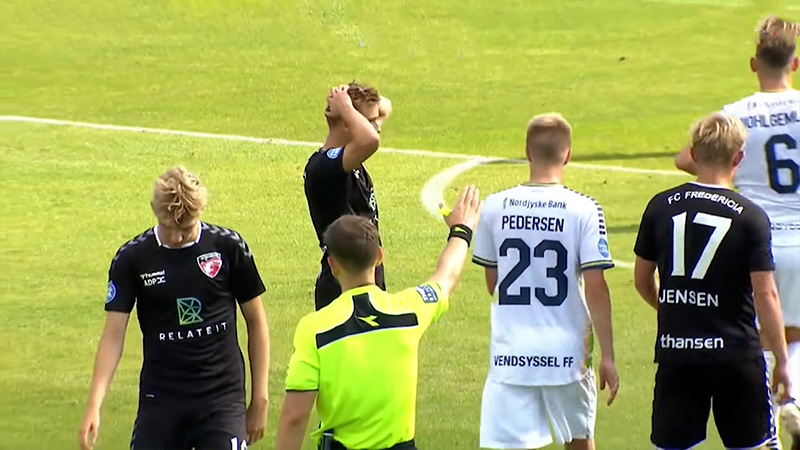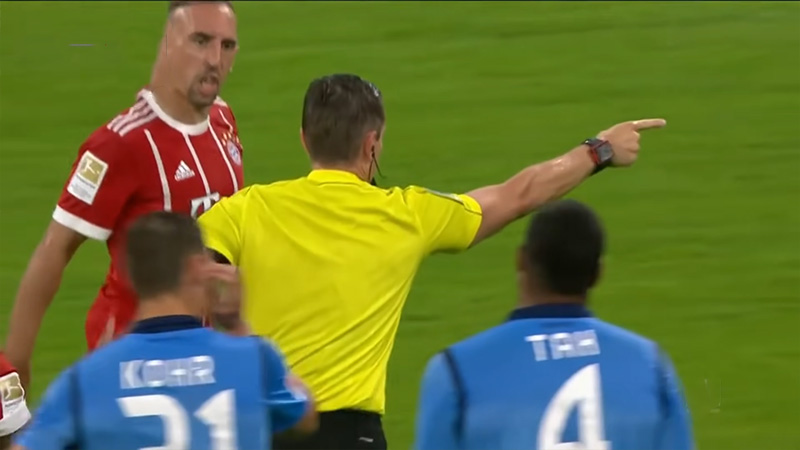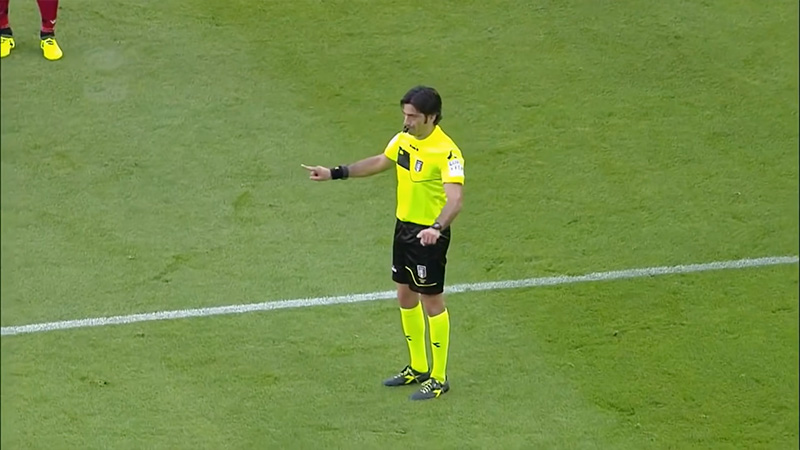In the ever-evolving world of soccer, where innovation and progress are key, a groundbreaking change has taken the sport by storm: the Soccer Advantage Rule. Designed to enhance the flow and fairness of the game, this rule has sparked intense debates and captivated fans worldwide.
Gone are the days of halting play for minor fouls and infringements, as the Advantage Rule empowers referees to allow play to continue when the non-offending team gains an advantage.
This revolutionary shift aims to reward skillful and attacking play, injecting a new level of excitement into every match.
By eliminating unnecessary stoppages and encouraging continuous action, the Soccer Advantage Rule promises to transform the beautiful game, providing players with more opportunities to showcase their talents and fans with a more dynamic and thrilling viewing experience.
Join us as we delve into the intricacies and implications of this game-changing rule, and explore how it is reshaping the future of soccer.
What Is the Soccer Advantage Rule?
The soccer advantage rule, also known as the play-on rule, is a fundamental principle in the Laws of the Game that allows the referee to apply their discretion when deciding whether to stop play for a foul or allow the attacking team to continue their advantage.
The rule is designed to promote continuous and flowing play, giving the attacking team the opportunity to maintain possession and potentially create a goal-scoring opportunity.
According to the Laws of the Game, when a foul is committed, the referee has the authority to either stop the play and award a free kick or penalty kick to the fouled team, or allow the play to continue if the fouled team has an immediate advantage.
The decision to apply the advantage rule is based on the referee’s judgment of whether the attacking team would benefit more from the continuation of play rather than stopping it.
When Is the Soccer Advantage Rule Used?

The soccer advantage rule is used in various situations during a soccer match. Here are some common scenarios where the advantage rule may be applied:
Foul on an Attacking Player
If a player from the defending team commits a foul on an attacking player, the referee may choose to apply the advantage rule if the fouled team still has possession of the ball and is in a promising attacking position.
By allowing play to continue, the attacking team has the opportunity to maintain their advantage and potentially create a goal-scoring opportunity.
Foul on a Player in a Non-threatening Position
If a foul is committed on a player who is not in a dangerous or advantageous position, the referee may decide to play the advantage rather than stopping the game.
This allows the attacking team to keep possession and continue their play without being disrupted by a stoppage.
Advantageous Numerical Situation
If the fouled team has a numerical advantage over the defending team, such as having more players in the attacking third, the referee may choose to apply the advantage rule.
This allows the attacking team to exploit their numerical superiority and potentially create a goal-scoring opportunity.
Advantageous Position on the Field
If the fouled team is in a favorable position on the field, such as being close to the opponent’s goal or in a good attacking position, the referee may decide to play the advantage.
This gives the attacking team the chance to maintain their advantageous position and continue their attacking play.
Advantageous Situation Due to a Defensive Error
If a defensive error, such as a misplaced pass or a mishandled ball, leads to an advantageous situation for the attacking team, the referee may choose to apply the advantage rule.
This allows the attacking team to capitalize on the defensive mistake and potentially create a goal-scoring opportunity.
It is important to note that the decision to apply the advantage rule is subjective and relies on the referee’s judgment.
The referee must assess the situation quickly and determine whether the attacking team would benefit more from the continuation of play rather than stopping it for a foul.
If the advantage does not materialize or the attacking team loses possession, the referee can still go back and award a free kick or penalty kick to the fouled team.
Soccer Advantage Rule Referee Signals

The advantage rule in soccer allows the referee to let play continue when a foul has been committed if the team that was fouled still has an opportunity to benefit from the situation.
The referee indicates the advantage by using both verbal and non-verbal signals. Here are the common signals used by referees to indicate the advantage rule:
Verbal Signal
The referee may shout “Play on!” or “Advantage!” to communicate to the players that the advantage is being applied.
Arm Signal
The referee extends one arm diagonally upward at a 45-degree angle, with the palm facing forward. This signal indicates that the advantage is being played and the fouled team can continue with the ball.
Whistle
The referee may blow the whistle once to acknowledge the foul and then quickly blow it again to indicate the advantage.
This helps to capture the attention of the players and signal that play should continue.
Note that if the advantage does not materialize or if the fouled team loses possession or fails to gain an advantage, the referee can still bring play back and award a free kick or penalty for the original foul. The referee has discretion in determining whether the advantage was realized or not.
Soccer Advantage Rule Examples
The advantage rule in soccer allows the referee to let play continue when a foul has been committed if the team that was fouled still has an opportunity to benefit from the situation. Here are a few examples of how the advantage rule can be applied:
- A player is fouled just outside the penalty area but manages to keep possession of the ball and has a clear scoring opportunity. The referee allows play to continue, giving the fouled team the advantage to potentially score a goal.
- A defender commits a foul while the attacking team is on a counter-attack. The referee allows play to continue, as the attacking team still has possession and numerical advantage, giving them a better chance to create a goal-scoring opportunity.
- A player is fouled near the halfway line, but the fouled team quickly regains possession and starts a promising attack. The referee decides to play the advantage, allowing the attacking team to continue their attack rather than stopping play for the initial foul.
- A player is tripped in the midfield, but the ball rolls to a teammate who is in a better position to continue the attack. The referee applies the advantage rule, allowing the teammate to carry on with the ball and maintain the attacking momentum.
- A player is fouled near the touchline, but the ball stays in play and reaches a teammate who is in a good position to cross or shoot. The referee plays the advantage, allowing the attacking team to take advantage of the promising situation.
FAQs
How does the advantage rule benefit the game?
The advantage rule benefits the game by promoting continuous play and maintaining the flow of the game.
Instead of stopping play for every foul, the referee has the discretion to allow the team that was fouled to continue their attack, which can lead to more exciting and dynamic gameplay.
Can the advantage rule be applied to any type of foul?
The advantage rule can be applied to most types of fouls, including both minor and major infractions. However, there are certain situations where the advantage rule may not be applied, such as when a foul results in a serious injury or when the team that was fouled is in a disadvantageous position.
Can the advantage rule be reversed if the advantage does not materialize?
In some cases, the referee may choose to reverse the advantage rule if the anticipated advantage does not materialize. If the team that was fouled loses possession, the referee can choose to stop play and award a free kick or penalty to the team that was fouled.
How does the advantage rule work in soccer?
When a foul is committed, the referee assesses whether the team that was fouled would benefit more from the foul being called or from being allowed to continue play.
If the referee determines that the fouled team has an immediate advantage, such as having possession of the ball and being in a promising attacking position, they will signal the advantage by raising their arm and shouting “Play on.”
Can the advantage rule be applied retroactively in soccer?
No, the advantage rule cannot be applied retroactively in soccer. Once the referee has signaled for advantage and play has continued, the decision is final. If the fouled team does not gain any advantage from the play continuing, they cannot later request a free kick or penalty for the original foul.
Final Words
As the Soccer Advantage Rule continues to make its mark on the world of soccer, its impact is undeniable. Players are now encouraged to push the boundaries of their skills, knowing that they will be rewarded for their efforts.
Fans are treated to a more fluid and fast-paced game, with fewer interruptions and more opportunities for breathtaking moments. Referees are empowered to make split-second decisions that prioritize the spirit of the game and the enjoyment of all involved.
While some may argue that the implementation of the Advantage Rule brings its own set of challenges and controversies, there is no denying that it has breathed new life into the sport.
As we witness the evolution of soccer, it is clear that the Advantage Rule is here to stay, forever altering the way we experience and appreciate the beautiful game. So, let us embrace this revolution and eagerly await the next chapter in the ever-evolving world of soccer.







